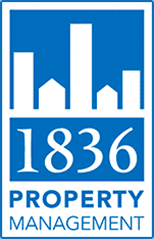Real estate investing can be very rewarding. But, in order to get the most out of your rental property, and to keep up on your real estate investment performance, you need to track and manage a few key performance indicators.
These KPIs can help you simplify real estate investing, drilling it down to some of the most important metrics. When you work with an experienced Austin property management company such as 1836 Property Management, you’ll be able to easily track and manage these key performance indicators so you can optimize your return on investment.
Below, we’ll dive deeper into some of the most important KPIs in real estate investing.
Return on Equity (ROE)
Return on Equity, or ROE, is a key performance indicator that measures the return on your rental property compared to the total equity you have in the property. To figure ROE, you take your total annual return and divide it by total equity. The total annual return will take into consideration your cash flow plus your principal paydown plus appreciation.
The reason that ROE is so valuable is that it allows you to compare the return on rental property to other investment types, such as bonds, stocks and even other opportunities in real estate investing.
As your property increases in value or you decrease debt, the denominator of ROE will change — unlike ROI, which measures your return versus the original amount that you invested in the property.
The average ROE in the stock market in the last century has been around 9% to 10% before inflation. As such, it’s important that your real estate investment performance is at least that or better.
Cash Flow
Cash flow is essential in real estate investing. If you’re not bringing in money, then you’re not going to be successful. That’s why it’s among the key performance indicators that every rental property owner should track and manage.
There are two types of cash flow. Gross cash flow measures all the money you collect not just from rental, but also from all extra income — fees for applications or if rent is late, or other income such as leasing appliances to tenants.
Net cash flow, by comparison, measures the amount of cash you have left after you have paid all your debt related to the property. Net cash flow is calculated by taking your gross cash flow and subtracting out operating expenses (including a mortgage payment, if you have one) as well as other capital expenses contributions.
In an ideal world, net cash flow would always be positive in real estate investing. There are times, though, when this might be negative for a set period of time.
For example, if your property remains vacant while you find a new tenant, you may have negative net cash flow until you fill the space. In these instances — and others like it — it’s important to limit the number of months where your net cash flow is negative.
Appreciation
Much of the focus of real estate investing is on the monthly returns it brings. ROE and cash flow are two key performance indicators that help you measure those returns.
Another side benefit of real estate investing is that the value of your rental property can appreciate over time. So, should you ever look to sell your rental property — or use the equity you’ve built in it for other purposes — you could do that if it’s grown in value. That’s why tracking appreciation on a rental property is important when analyzing your real estate investment performance.
Appreciation can happen in one of two ways. The first, known as passive appreciation, is out of your control. This happens when the local real estate market improves, and your property increases in value because of it.
The second type is called forced appreciation. You can add value to your rental property by making smart upgrades to it, such as improving the kitchen and bathrooms or undertaking other remodeling projects. We like to call this “investing into your investment.”
Days on Market or Frequency of Renewals
These two key performance indicators are intertwined. When you are searching for tenants, days on market is an important real estate investment performance metric.
Days on market is simply a count of how many days your rental property has been listed for. Ideally in real estate investing, you want your property to find a tenant within 60 days. If you don’t, then you might work with your Austin property management partner to figure out why, which could include a reduction in the list price.
When your rental property is leased, you’ll want to monitor the frequency of renewals. This will tell you how often you’re able to renew current leases on your properties, which can tell you what you’re doing right — or wrong — and what you might need to adjust.
Monitor Your Stats in Real-Time with 1836 Property Management
Tracking all of these key performance indicators is essential so you can measure your real estate investment performance. There are many ways that you can do this, of course, but many approaches are done after the fact.
When you work with 1836 Property Management, you’ll be able to track all these KPIs in real-time. In 2022, 1836 Property Management built proprietary software called REI Monitor that allows investors to monitor all their key real estate investing stats in real time.
This is a one-of-a-kind solution that’s targeted specifically to investors in the single-family residence market. REI Monitor is another reason why it pays to partner with the experienced Austin property management team, 1836 Property Management, if you’re looking to maximize your rental property returns.
Contact us today to learn more.
By: Kayla Gonzales, 1836PM Marketing Manager







